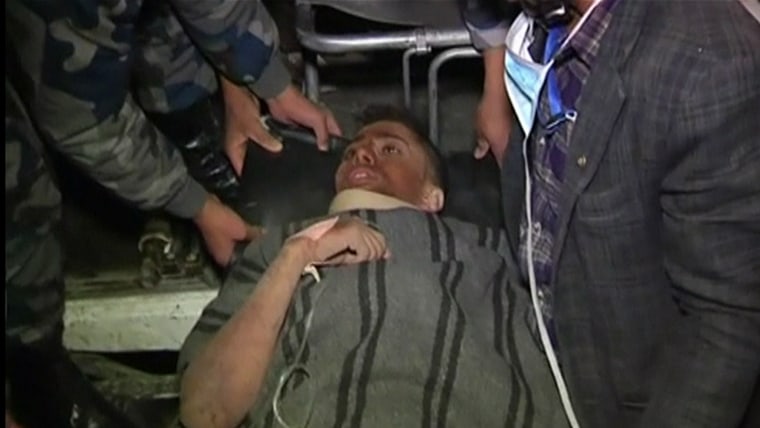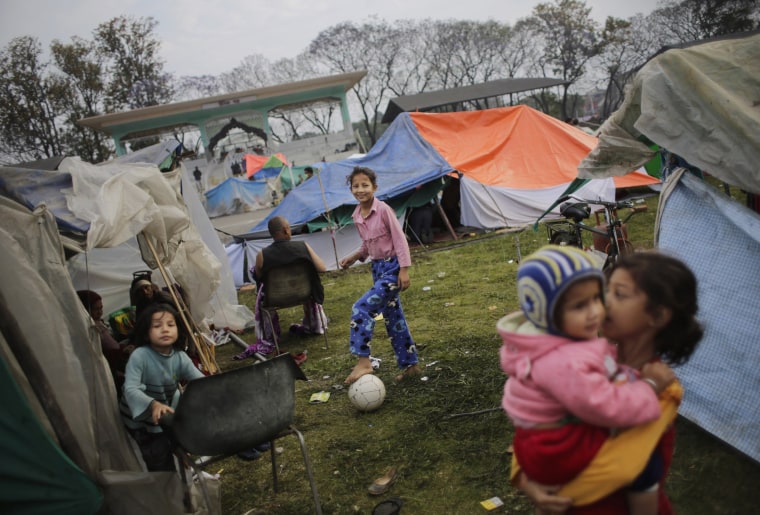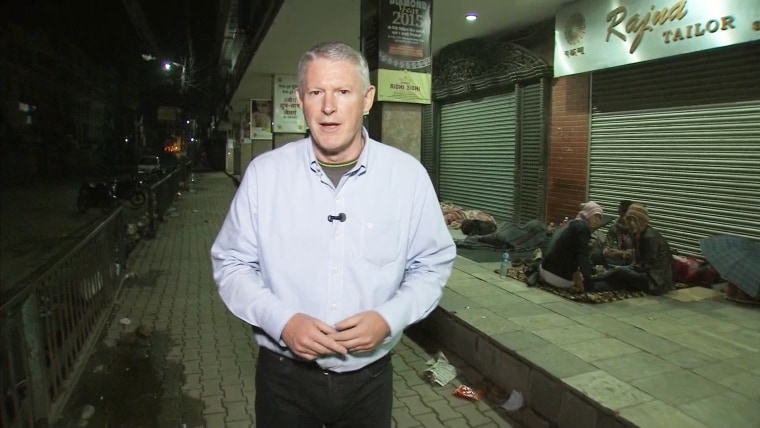The earthquake that killed more than 5,000 people has set the stage for a potential cholera crisis in Nepal — the same country that unwittingly exported the devastating disease to Haiti after its quake five years ago.
Cholera, a deadly bacterial infection that causes rapid loss of bodily fluid, is endemic to Nepal, where there have been at least two outbreaks in recent years.
And last week's quake created conditions under which cholera and other water-borne diseases thrive: compromised water supply, lack of sanitation, and survivors crowded into tent camps, health officials say.

"When you have people on the move, when you have people away from home, or they live in a shelter, there is a disruption in the water and sanitation system and that increases the risk of cholera," said Tarik Jasarevic, a spokesman for the World Health Organization.
That was the situation after Haiti was ravaged by a quake in 2010. Ten months later, the island nation faced a misery never seen there before: cholera exploded in Mirebalais and quickly spread to all corners of the country and even beyond the borders.
U.N. peacekeepers from Nepal who were stationed in Mirebalais are widely believed to be the source of the long-running epidemic, which has sickened more than 730,000 Haitians and killed nearly 9,000, according to the Pan-American Health Organization.
"The conditions are certainly right for cholera to take hold"
In Nepal, which has documented cholera cases stretching back to 1823, cases tend to spike during the rainy season, which begins in just a few weeks. The cycle is vicious: the bug causes constant diarrhea, and the infected waste gets into the water supply.
The elderly and young children are the most susceptible, and patients who can be rehydrated quickly usually survive. But those who come down with a severe form of the illness and cannot get help fast enough — a danger in remote regions — can die.
"It kills you within 10 hours," said David Sack, a professor at Johns Hopkins' Bloomberg School of Public Health and director of its cholera-vaccine project. "And it's a disease that affects the poorest of the poor."

WHO says it has no reports of cholera in Nepal right now and is focused on traumatic injuries from the 7.8-magnitude jolt that left swaths of Kathmandu and remote areas outside the capital in rubble.
Sack said not all cases are necessarily reported to WHO, so public health workers on the ground must be vigilant and proactive — not just for cholera, but for outbreaks of e.coli, typhoid and other illnesses.
WHO has epidemiologists on the ground in Nepal, Jasarevic said. And groups like the International Medical Corps are rushing to get water-purification kits and other sanitary aids to the affected communities.
"It kills you within 10 hours ... and it's a disease that affects the poorest of the poor."
One aid worker told NBC News that there were about 14,000 people camped out in Tundikhel parade ground on Tuesday, double the previous day with more expected Wednesday — with no fresh water supply and only a handful of toilets at one end of the mile-long stretch.
"The conditions are certainly right for cholera to take hold," the worker said.
A vaccine for cholera was approved by WHO in 2011 but "production is not yet ramped up," Sack said.
The Indian manufacturer can only make 2 to 3 million doses a year for the entire world, and Nepal has only a few thousand doses on hand — not nearly enough to stop an epidemic in its tracks in a country of 28 million people.
If a cluster of cases is identified in a particular area, however, health authorities could try to use the global stockpile to vaccinate 100,000 to 200,000 people and keep the infection confined, Sack added.
Follow NBC News Investigations on Twitter and Facebook.
He added that cholera can be unpredictable, and the threat is never realized in some disaster areas.
After the 2004 quake and tsunami in Indonesia, one of the most prone countries, an influx of bottled water helped keep cholera at bay, according to one federal study. Yet Haiti, which had no modern history of the disease, couldn't keep it from galloping out of control.
"What leads to a major outbreak in one country but not another is something we're still trying to figure out," Sack said.


